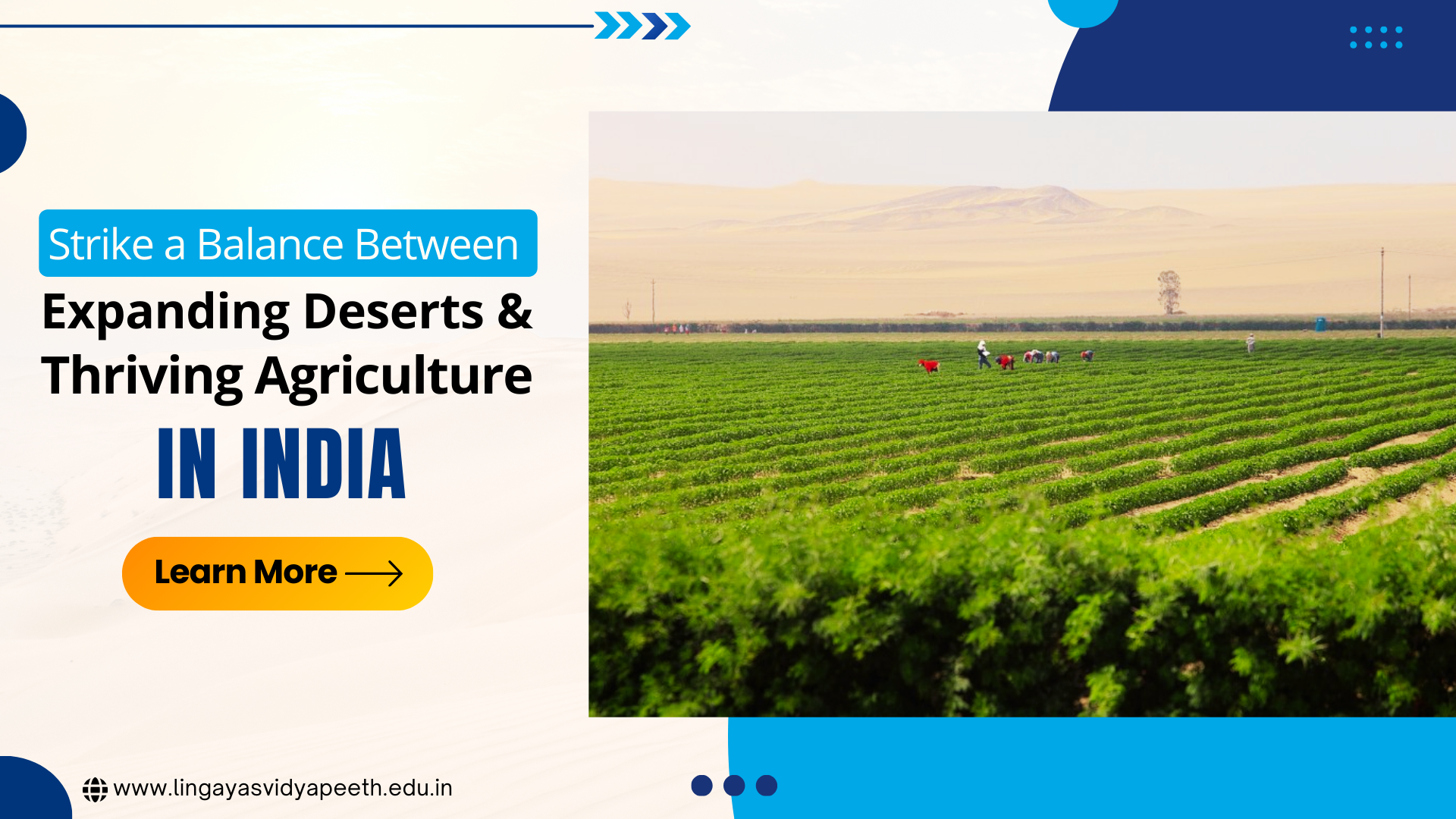Home » Can India Strike a Balance Between Expanding Deserts and Thriving Agriculture?

India, a land of vibrant shades, diverse cultures, and an extensive agricultural tradition, is facing a unique challenge: a growing desert on one side and a thriving agricultural sector on the other. While the idea of a vast, dry wasteland may spring to mind when thinking of deserts, India’s tale is more complex.
Let’s look into the wonderful balancing act of desertification and agricultural development.
The Thar Desert, situated in the western state of Rajasthan, is the main cause of India’s desert issues. This dry area, which already covers a large chunk of the state, is constantly increasing. According to the Central Arid Zone Research Institute (CAZRI), the Thar has been moving outwards over the past two decades, which is cause for concern. This growth might be attributable to numerous sources, including
Despite the expansion of the Thar, India’s agricultural sector is thriving. The country is currently the world’s leading producer of pulses, the second-largest producer of rice, wheat, fruits, and vegetables, and a prominent player in the global food industry. This success story, however, has its own set of challenges:
The problem requires novel solutions for both desert control and agricultural expansion. Here are some promising methods:
Despite the considerable hurdles, there are encouraging examples of communities working together to find a solution. In Rajasthan, communities such as Kalu are restoring pastures by planting drought-resistant grasses and trees. These programs not only battle desertification, but also enhance grazing land for cattle, which is critical to the local economy.
Urban Farming: Cultivating Food Production in the Concrete Jungle
Conclusion-
The fight against desertification and the drive for sustainable agriculture are intertwined in India. Our country can attain a delicate balance by continuously innovating, participation of the community, and managing resources responsibly. In this contest, both agriculture and the environment have the potential to win, assuring future food security.
Wanna pursue a BSc Agriculture? Lingaya’s Vidyapeeth, being one of the leading Best Agriculture Colleges in Delhi NCR is the best choice for students who wish to pursue a BSc Agriculture. Lingaya’s Vidyapeeth provides students with hands-on training, research opportunities, and industry exposure to meet the challenges of modern agriculture.
From
Dr. Nand Ram
Ph.D. & Post Doctorate (Soil Science)
School of Agriculture
Lingaya’s Vidyapeeth
Best Colleges in Faridabad for BSc Agriculture
RECENT POSTS
CATEGORIES
TAGS
Agriculture Agriculture future AI Architecture artificial intelligence BA English BA Psychology BTech CSE BTech Engineering Business management career Career-Specific Education career guide Career Opportunities career option career scope Civil engineering commerce and management Computer Science Computer science engineering Data science degree education Engineering Engineering students English Literature english program Exam tips Fashion Design Fashion design course Higher Education Journalism journalism and mass communication law Law career Machine Learning MA Psychology Master degree mathematics MBA Mechanical Engineering Pharmacy Psychology Research and Development students
University Address: Nachauli, Jasana Road, Faridabad, Haryana
Toll Free: 1800-120-4613
Mobile : 8447744303 | 8447744304 | 8447744306 | 8447744309
Address: C-72, Second Floor, Shivalik, Near Malviya Nagar,
Above HDFC Bank, New Delhi 110017
Ph.No. - 011-46570515 / 45138169 / 41755703 / +91-7303152412
Jagmani Kutir, Ground Floor, Road No-1, Rajeev Nagar,
Near Darbar Marriage Hall, Patna-800024, Bihar
Contact No: 9818352069/8130120095
Mail: [email protected]
Copyrights © 1998 - 2025 Lingaya's Vidyapeeth (Deemed To Be University). All rights reserved.
It is important to note that the following email IDs and domains are fraudulent and do not belong to our university.
LV only conducts physical/online verification of any document related to examination on the following email id: